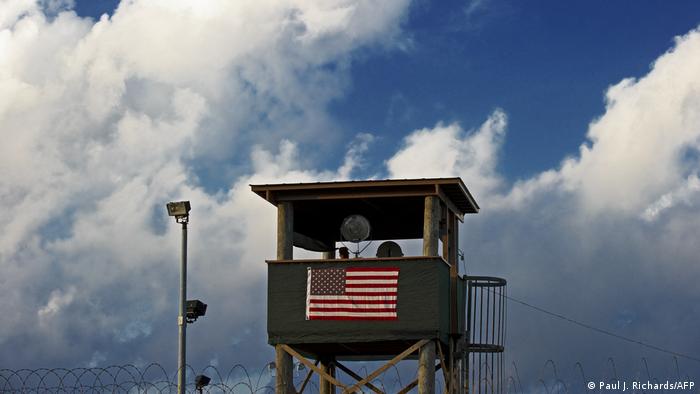

Israeli police detain a man during a Bedouin protest in the southern Israeli village of Sa'we al-Atrash in the Negev Desert against a tree-planting project (AFP/AHMAD GHARABLI)
Israel's government on Wednesday sought to ease tensions with Bedouin over a controversial tree-planting project in the Negev desert, following days of unrest marking the latest test for a fragile coalition.
Sixteen people were arrested earlier Wednesday and five officers were lightly wounded in clashes that saw "rioters" throw stones at security forces, police said in a statement.
Bedouin, who are part of Israel's 20 percent Arab minority, have long opposed tree-planting initiatives in the Negev, blasting them as a de facto government land grab in areas they call home.
The latest unrest in the decades-long dispute has attracted fresh attention given the make-up of Israel's coalition government, led by right-wing Prime Minister Naftali Bennett.
Bennett's government counts on backing from the leader of the Islamist Raam party, Mansour Abbas, whose core political support comes from Bedouin in the Negev.
Abbas told Israel's Channel 12 news on Tuesday that his party will not vote with the coalition unless the tree planting is halted and formal negotiations with Bedouin leaders are launched to seek a compromise.
"Trees are not more important than human beings," Abbas tweeted.
A statement from Social Affairs Minister Meir Cohen said "a compromise has been reached according to which the planting work will be completed today (Wednesday) as planned and starting tomorrow, accelerated negotiations will take place."
The right-wing Regavim environmental civil society group called on Bennett's government "to take a firm position against the Raam Party's threats, to ensure that tree planting projects... are carried out as planned."
Nearly half of Israel's 300,000 Bedouin live in unrecognised villages in southern Israel's arid Negev.
They face regular home demolitions and lack of access to basic services -- including electricity, water and sanitation -- challenges Abbas insisted be addressed in exchange for backing Bennett's government.
bur-yz/bs/it
Katie Wermus -

© Mahmoud Illean/AP Photo
Israeli security forces guard during a protest held by Bedouins against tree-planting by the Jewish National Fund on disputed land near their village of al-Atrash at the Negev desert, southern Israel, Wednesday, Jan. 12, 2022. The conflict in southern Israel, which is home to Bedouin villages unrecognized by the state, has divided the Israeli government with Foreign Minister Yair Lapid calling for halting the tree-planting while the Islamist Ra'am party has threatened to withhold its votes in parliament in protest.
Israel concluded its forestation work planting trees on disputed land in the Negev Desert on Wednesday after local Arab Bedouins protested because they believed it was an attempt by the government to displace them.
The Keren Kayemet L'Yisrael-Jewish National Fund (KKL-JNF) finished its forestry work in the desert where Bedouins staged protests for three days, saying the forestry work was an attempt to move them into planned communities, The Times of Israel reported.
Protests on Tuesday night over the forestry project turned violent. People set a reporter's car on fire and blocked a major highway with burning tires. They also threw stones at trains and vehicles on the freeway and blocked the railroads, according to The Times of Israel.
At least 18 people were arrested during the unrest and five officers were injured. Four of those officers were briefly hospitalized.
The Bedouins are upset over tree planting by the KKL-JNF and believe the project is a step toward forcing them to give up their grazing lands.
However, the KKL-JNF works on nature and conservation projects across the country and said it is just doing what the government asked by planting trees on public lands.
Critics of the move to stop planting trees said the KKL-JNF had "surrendered to terror"; however, the forestation was reported to only last three days to begin with.
The Israeli government announced a compromise in which it would complete the day's planting and launch negotiations on Thursday. Authorities withdrew heavy machinery from the area as the tensions appeared to ease.
The Bedouins view the forestry project as part of a larger attempt by authorities to move them into planned communities, which the group perceives as an assault on its traditional lifestyle. Israel says they need to move into planned towns so the country can provide public services.
The latest flare-up of the dispute, which goes back decades, risks dividing Israel's fragile coalition government, the first to include an Arab party whose main base of support is in the Negev.
Foreign Minister Yair Lapid had called for halting the planting and reassessing the situation while the Islamist Ra'am party had threatened to withhold its votes in parliament in protest. Both are members of the fragile eight-party coalition that runs the government.
Ra'am, the Islamist party, secured four seats in the 120-member Knesset, Israel's parliament, in last year's elections, with strong support among Bedouin citizens of Israel. Party leader Mansour Abbas wrote on Twitter that "a tree is not more important than a person."
More hawkish members of the diverse governing coalition had pledged to press on, undeterred. Regavim, a nationalist group that is opposed to normalizing the status of Bedouin villages, accused the government of capitulating to "political pressure, strongarm tactics and violence."
Prime Minister Naftali Bennett heads an unwieldy coalition of eight parties that joined forces in June to form a government and end Israel's protracted political deadlock. They range from the small Islamist and liberal parties to ultranationalists, and were united only in their opposition to longtime leader Benjamin Netanyahu.
The Bedouins are part of Israel's Arab minority, which makes up some 20% of the country's population. They have citizenship, including the right to vote, but face discrimination. Arab citizens of Israel have close family ties to the Palestinians and largely identify with their cause.
The Associated Press contributed to this report.











